Hyperlocal
Why Hyperlocal Digital Infrastructure Matters in 2025
Wed, 16 Jul 2025 11:21:35 GMT
Speak to our Hyperlocal Expert
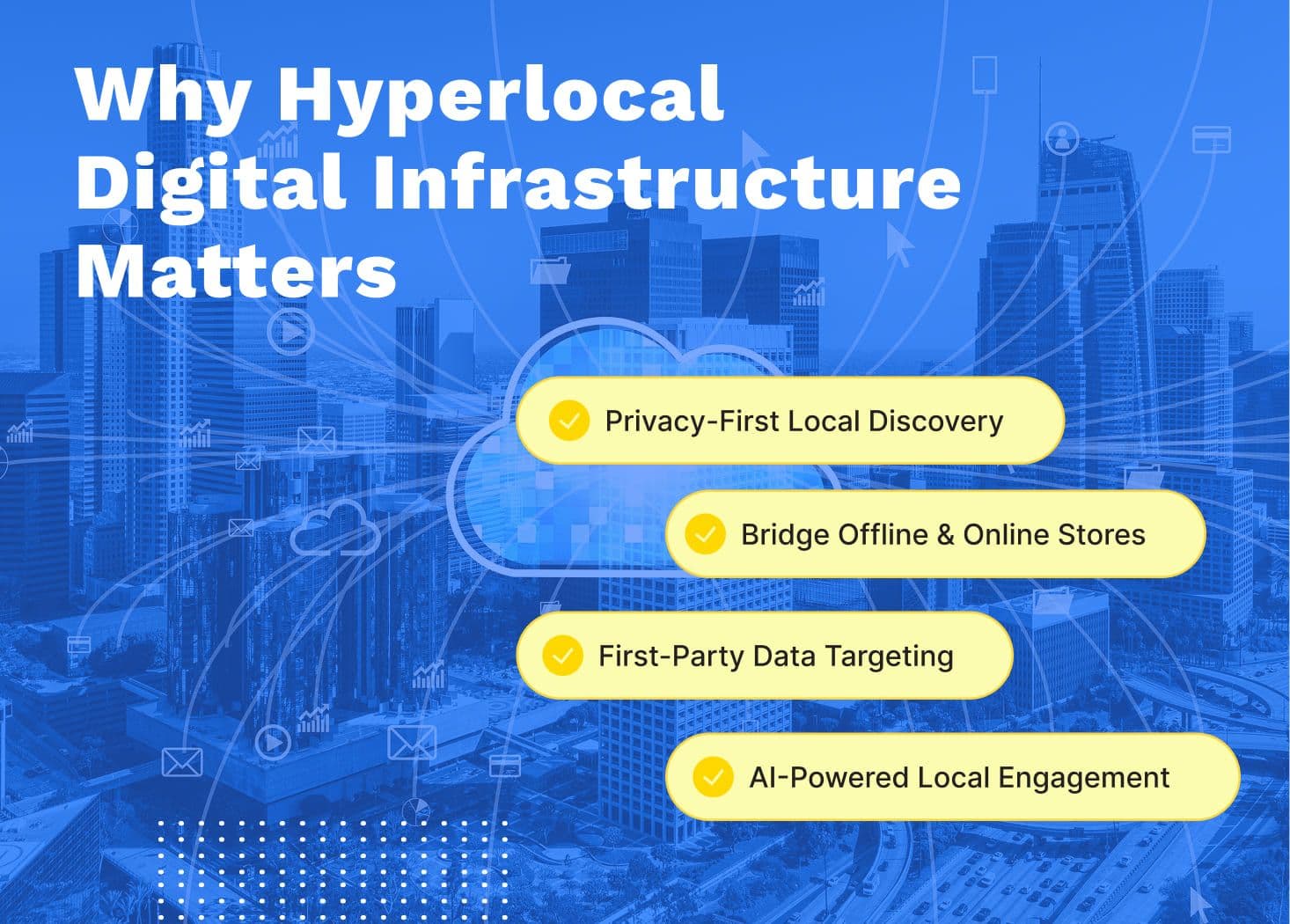
In today’s digitally driven world, hyperlocal digital infrastructure refers to the technology, tools, and strategies that help businesses connect with nearby customers at the right time and place, especially through platforms like Google, Meta, WhatsApp, and more. It’s the foundation that ensures your brand is discoverable, trusted, and reachable in every “near me” search or local digital interaction.
Despite the rise of e-commerce, over 97% of all sales still happen in physical stores. However, these purchases are now largely influenced by digital touchpoints - from Google Maps to product listings on Instagram. This shift demands a new kind of infrastructure that blends online visibility with offline presence.
As we move into 2025, businesses can no longer afford to rely solely on traditional methods. To stay competitive, drive footfalls, and generate quality leads, building a robust hyperlocal digital foundation is no longer optional - it’s essential.
This is where Sekel Tech leads the way. With its advanced hyperlocal discovery and omni-commerce platform, Sekel Tech helps brands, retailers, and local businesses transform customer journeys, turning online discovery into real-world conversions.
Why Hyperlocal Matters More Than Ever
In an age where every customer journey starts online, digital touchpoints now shape nearly every in-store purchase decision. Whether it’s a quick Google search, a product reel on Instagram, or a message on WhatsApp, today’s consumers expect instant, relevant, and location-specific results.
The rise of mobile usage has amplified this trend. People now search for products and services “on the go, "with intent-driven queries like “coffee shop near me” or “best tyre shop nearby." These searches are not just casual browsing - they signal immediate purchase intent. In fact, most near me searches lead to a store visit within 24 hours, making hyperlocal visibility a critical advantage.
Brands and retailers that invest in strong hyperlocal digital infrastructure enjoy a clear competitive edge. By ensuring their business appears in these high-intent local searches - with updated profiles, dynamic catalogs, and real-time communication - they see higher footfalls, better lead quality, and more conversions.
More importantly, consumer expectations have shifted. Shoppers want personalized, timely, and localized experiences. They expect to see products available nearby, get directions instantly, message the store, or even place an order - all within a few clicks.
Hyperlocal isn’t just a buzzword. It’s the bridge between digital discovery and physical action, and in 2025, mastering it means winning locally - and growing exponentially.
Read Also - What Is Hyperlocal Marketing? A Complete Guide in 2025
Core Components of Hyperlocal Digital Infrastructure
1. Google Business Profile (GBP)
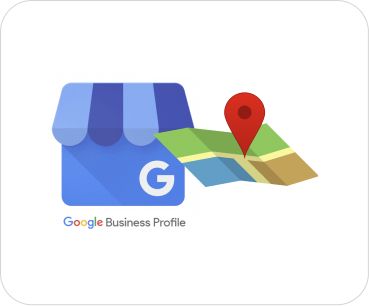
The Google Business Profile (GBP) is the cornerstone of any hyperlocal digital strategy. It plays a critical role in local SEO, helping businesses appear in Google Search and Google Maps results when customers look for services “near me.” In today’s mobile-first environment, GBP is often the first digital interaction a potential customer has with your brand.
When optimized correctly, a GBP can significantly increase store visibility, drive foot traffic, and influence buying decisions. It powers key features like business hours, directions, photos, services, and customer reviews - all of which impact a customer’s decision to visit or contact your business.
Moreover, GBP integrates seamlessly with Google Ads through location extensions, making it easier to run locally targeted paid campaigns. When customers see your ad alongside verified local details, it boosts both trust and click-through rates.
To maximise its effectiveness, GBP must be treated as a living profile, not a one-time setup. Businesses should:
- Post weekly updates (offers, announcements, events).
- Upload fresh images regularly.
- Encourage and respond to customer reviews.
- Enable bookings or orders if applicable.
- List all key services and categories clearly.
A well-maintained GBP is the engine behind hyperlocal discovery, turning digital interest into real-world store visits.
Watch this video to learn how brands are revolutionising their GMB presence - boosting local search visibility, footfall, and lead generation through real-time updates, structured data, and AI-driven insights. "Revolutionising Google My Business Growth with Sekel Tech"
2. Facebook Places
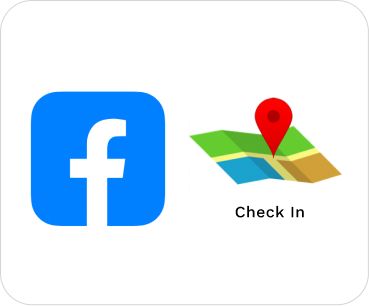
Facebook Places is a powerful but often underutilized asset in a brand’s hyperlocal digital strategy. It allows businesses to claim and manage location-specific entries across the Meta ecosystem, which includes Facebook and Instagram, two of the most widely used platforms for local discovery and engagement.
By enabling hyperlocal targeting within Meta platforms, Facebook Places ensures your ads reach users who are not only geographically nearby but also actively browsing or engaging with location-relevant content. Whether it's someone scrolling Instagram near your store or checking in at a competitor’s location, Facebook Places helps your business stay visible where it matters most.
Accurate and consistent location mapping is crucial. Facebook Places links each store or outlet to the correct address, ensuring that users find your location easily when searching or tagging posts. It also supports location-based ad formats like store visits, footfall tracking, and radius targeting.
In addition to improved ad relevance and reach, Facebook Places also enhances your brand's local credibility. When customers can tag your store, check in, or leave reviews directly on the location page, it builds trust and increases engagement.
Claiming and optimising Facebook Places ensures that every store location is discoverable, interactive, and ad-ready, making it an essential component of your hyperlocal digital infrastructure.
3. Store Instagram Account
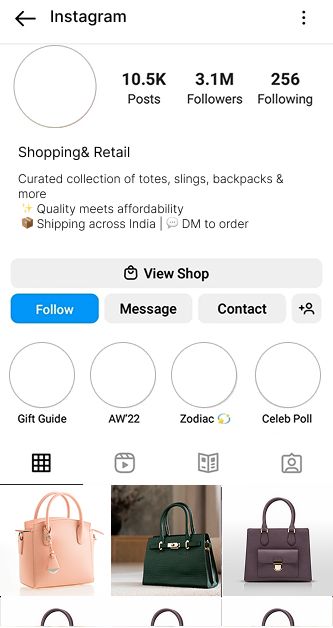
A dedicated store Instagram account is more than just a social media handle - it’s a direct line to your local community. In the era of visual discovery and real-time interaction, Instagram plays a vital role in building localized content, trust, and engagement.
By posting location-specific content - such as tyre fitting demos, product walk-throughs, behind-the-scenes videos, or local offers - businesses can connect with nearby audiences on a personal level. This kind of content not only humanizes the brand but also boosts relevance in local search and social feeds.
Instagram also integrates seamlessly with Meta’s ad ecosystem, allowing businesses to run highly geo-targeted campaigns using store-based content. For example, a carousel ad promoting a limited-time tyre offer can target users within a 5-mile radius of a specific store, driving both awareness and footfall.
Using features like location tags, reels, and Instagram Stories, stores can also highlight local testimonials, feature staff introductions, or promote events - all of which deepen community engagement and build local brand loyalty.
When connected to Facebook Places and supported with a live catalogue, Instagram becomes a powerful engine for discovery, engagement, and conversion, right from a user's feed to your store floor.
In short, a store’s Instagram presence is no longer optional. It’s a critical tool for hyperlocal brand building and dynamic ad execution.
4. WhatsApp Business (Blue Tick Account)

In hyperlocal marketing, speed and trust are everything, and WhatsApp Business, especially with a verified blue tick, delivers both. As one of the most widely used messaging platforms, WhatsApp is a powerful tool for direct, 1:1 communication with potential and existing customers.
A blue tick-verified business account signals authenticity, enhancing credibility and trust during post-advert interactions. Whether a customer clicks on a WhatsApp-enabled ad or scans a QR code in-store, they’re more likely to engage when they know they’re talking to a verified brand.
Beyond trust, the platform is built for efficiency and personalization. Businesses can:
- Share product or service catalogues directly in chat.
- Use quick replies to respond faster to common queries.
- Set up automated greetings and follow-ups to ensure no lead goes cold.
This immediacy and convenience significantly boost conversion rates, especially for high-intent customers who expect instant answers, such as tyre specifications, pricing, appointment slots, or store directions.
When integrated into your Sekel Tech dashboard, WhatsApp becomes part of a larger lead-nurturing system. It can trigger real-time responses based on ad interactions, locator visits, or lead scoring, ensuring timely engagement and higher retention.
In short, a blue tick WhatsApp Business account isn’t just a messaging tool - it’s a hyperlocal sales channel that builds relationships and drives measurable results.
5. Live Product/Service Catalogue
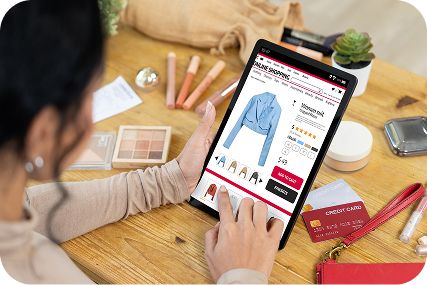
A live product or service catalogue is the foundation of effective hyperlocal advertising across platforms like Google and Meta. It enables businesses to display dynamic, personalized ads based on real-time inventory, customer behavior, and location data, making every impression more relevant and conversion-driven.
By integrating your catalogue with tools like Google Merchant Centre and Meta Commerce Manager, you can showcase individual products or services—such as tyre models, combos, or offers - in the exact moment a customer is searching or scrolling. These dynamic feeds ensure that users always see the most up-to-date pricing, availability, and offers, which significantly increases click-through and conversion rates.
This setup also powers automated ad formats like Performance Max (Google) and Dynamic Product Ads (Meta), where the platforms automatically match the right products to the right people based on their interests, location, and past behavior. For local businesses, this means less manual effort and more precision in targeting high-intent local customers.
When combined with hyperlocal signals - such as store proximity or past visits tracked via cookies - catalogue-driven ads become incredibly powerful, pulling users deeper into the buying journey.
In essence, a live product/service catalogue transforms your local presence into a personalized retail experience, helping customers discover what they need, where they need it, and take action instantly.
6. Dynamic Store Locator
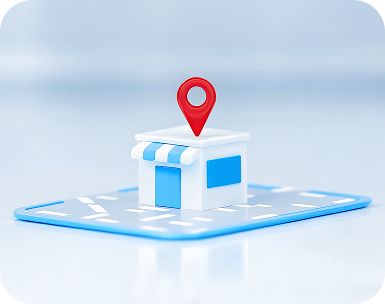
A dynamic store locator is a crucial part of any hyperlocal digital infrastructure - it acts as both a conversion driver and an SEO engine. More than just a list of addresses, today’s store locators are interactive, mobile-friendly, and optimized to respond to user behavior and location in real time.
When SEO-optimized with structured data and location-specific keywords like “tyre shop near me” or “Continental tyres in [city],” store locators can boost organic traffic by 20–30%. These location pages are indexed by search engines, giving each outlet a unique digital footprint that drives visibility across Google, Bing, and Apple Maps.
In addition to organic discovery, a dynamic locator sends geo-signals to ad platforms, enhancing targeting precision for geofenced campaigns on Google, Meta, and other platforms. This helps deliver ads to users within a specific radius of each store - based on intent and proximity - increasing conversions and reducing ad waste.
When connected to platforms like Google Business Profile, Facebook Places, Bing Places, and Apple Maps, it ensures a consistent and discoverable presence across all major touchpoints. And by enabling smarter ad targeting, it reduces cost-per-click (CPC) by 10–15%, making your campaigns more efficient.
A powerful store locator doesn't just help customers find you - it ensures your brand is found first, trusted faster, and visited more often.
Watch this quick video on why an SEO-optimized store locator is more than just a map - it’s a traffic driver, ad enhancer, and a conversion booster for your brand. "The Importance of a Store Locator: How It Can Boost Your Business"
7. Dealer/Retailer-Level Wallet
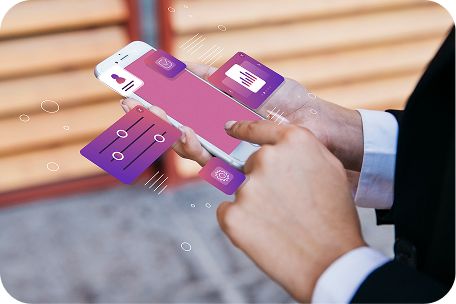
Managing digital ad budgets across multiple locations can be chaotic - unless you have a dealer/retailer-level wallet system in place. This centralized yet flexible wallet, available via the Sekel Tech dashboard, allows brands to streamline hyperlocal ad execution by allocating budgets per store or dealer while maintaining control and consistency.
Instead of relying on local partners to manually run ads (often inconsistently or without strategic oversight), brands can use pre-approved templates for platforms like Google, Meta, TikTok, Twitter, Bing, Pinterest, LinkedIn, WhatsApp, and email - all tied to a single wallet. This ensures every campaign launched at the store level aligns with brand standards, performance goals, and creative guidelines.
The dealer wallet also enables real-time budget adjustments based on store performance, demand cycles, or local events. For instance, if a particular outlet is running a weekend tyre check-up offer, the wallet allows for an instant budget boost with pre-set creatives, targeting, and copy.
This approach not only speeds up campaign activation but also minimizes delays, errors, and overspending. It empowers local retailers to act fast, without compromising quality or strategy.
Ultimately, the dealer-level wallet is a game-changer for scaling hyperlocal campaigns across regions, helping brands increase agility, reduce overhead, and maximize return on ad spend, store by store.
8. Inbuilt Lead Management with Agentic AI

Generating leads is only half the battle - managing, scoring, and converting them in real time is what truly drives ROI. Sekel Tech’s inbuilt Lead Management system, powered by Agentic AI, is designed to do just that by intelligently tracking and optimizing every lead that comes in via your hyperlocal campaigns.
Whether the lead comes from a Google ad, Facebook form, WhatsApp message, or your store locator, Agentic AI captures it instantly and assigns a score based on behavior, intent, and source. For example, a customer who visited the locator page, clicked on a product, and requested a callback would receive a higher intent score than someone who only clicked an ad.
Once scored, leads are automatically routed - either to the appropriate sales rep, WhatsApp engagement, or added to a retargeting list - ensuring no opportunity is lost. This real-time allocation boosts conversion rates by 10–15%, especially in high-velocity retail environments where follow-up timing can make or break the sale.
In addition to conversion-focused routing, the system offers granular analytics, tracking the effectiveness of every lead source, message, and campaign. Retailers can see which stores are underperforming, which ads are generating high-quality leads, and where to reallocate budget for better ROI.
Agentic AI brings automation, intelligence, and speed to lead management, turning hyperlocal interest into real business growth.
Read Also - How Sekel Agentic AI Transforms Retail Success
9. Sekel First-Party Cookies
In a privacy-first digital world where third-party cookies are fading, first-party data has become the gold standard for effective marketing. Sekel First-Party Cookies empower businesses to own and leverage customer behavior data directly from their websites and microsites, without relying on external trackers.
These cookies capture user journeys from first visit to final purchase, recording actions such as product views, store locator interactions, advert clicks, and contact form submissions. This allows businesses to build a rich behavioral profile for each visitor, even before they become a known lead.
What sets Sekel’s cookies apart is their integration with Agentic AI. When a user performs a high-intent action - like searching for a nearby tyre store or viewing a service offer - Agentic AI triggers real-time engagement, such as a WhatsApp message, push notification, or email alert. This timely response increases the chances of conversion significantly and contributes to a 15–20% improvement in customer retention.
Furthermore, first-party cookies help identify repeat visitors, enable smart retargeting, and fuel audience segmentation for future campaigns - all while staying compliant with privacy regulations like GDPR and UK GDPR.
With Sekel’s first-party cookies, you don’t just track users - you understand them, engage them at the right moment, and nurture them into lifelong customers. It's a vital piece of your hyperlocal growth engine that keeps improving over time.
Watch the video to see how Sekel Tech uses first-party data to map user journeys, trigger real-time engagement, and create seamless omnichannel experiences. "Harnessing First-Party Data: Sekel's Game-Changing Approach"
Supporting Digital Channels for Hyperlocal Strategy
While the core components of hyperlocal digital infrastructure form the foundation, several additional digital channels play a crucial role in extending reach, engagement, and conversions. These platforms, when strategically integrated, complement your existing setup and ensure your brand is discoverable and relevant across every digital touchpoint.
1. Twitter
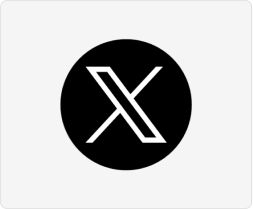
Twitter offers unique value in the form of real-time local engagement. It’s ideal for promoting limited-time offers, store events, or local campaigns that thrive on urgency and visibility. With geo-targeted promoted tweets, businesses can reach specific audiences by location, perfect for driving footfall during flash sales, pop-up events, or seasonal promotions. Store-specific Twitter handles can also boost credibility and increase engagement within local communities.
2. Bing
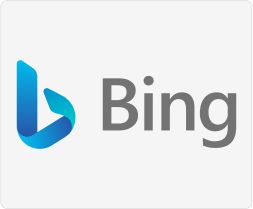
As a strong alternative to Google, Bing captures a different yet significant user base, particularly among desktop and Microsoft ecosystem users. Through Microsoft Ads and Bing Places, businesses can improve their presence in local search results, especially for customers using Microsoft Edge, Windows 11 search, or voice assistants like Cortana. Syncing Bing Places with your GBP ensures consistency across platforms and enhances local discoverability.
3. Apple Maps

With a large and loyal iOS user base, Apple Maps plays a pivotal role in "near me" search discovery. Many users on iPhones rely on Apple Maps over Google Maps for directions, store hours, and contact details. Registering with Apple Business Connect ensures your business appears accurately and attractively across all Apple-native services, including Siri and Spotlight search, making it a must for a full-stack hyperlocal presence.
4. Pinterest

Pinterest is a powerful visual platform for product discovery and inspiration. For businesses selling style- or design-focused products - such as tyres with aesthetic features, accessories, or seasonal promotions - Pinterest boards tailored to local interests (e.g., “Tyre Safety for Monsoon Drives” or “Weekend Road Trip Essentials”) can increase engagement. It’s also a great way to inspire undecided shoppers with curated content.
5. LinkedIn
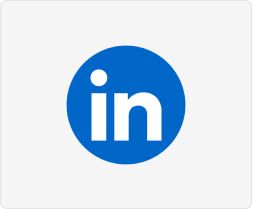
For brands with a B2B or professional audience, LinkedIn is an essential hyperlocal channel. Whether promoting corporate fleet sales (e.g., Continental Tyres for enterprise accounts) or hiring for local stores, LinkedIn supports precise geo-targeting and lead generation through Sponsored Content and InMail. It’s especially useful for building credibility with decision-makers and establishing a presence in professional communities.
Together, these channels extend your hyperlocal impact beyond the basics, ensuring your brand is visible, trusted, and engaging at every step of the local customer journey.
Why Sekel Tech is the Ideal Partner for Hyperlocal Enablement
Building an effective hyperlocal digital infrastructure requires more than just tools - it demands a unified, intelligent ecosystem, and that’s exactly what Sekel Tech delivers. Designed specifically to empower retailers, dealers, and multi-location brands, Sekel Tech’s all-in-one dashboard integrates every essential component needed for hyperlocal success.
From dynamic store locators and first-party cookies to real-time lead management with Agentic AI, Sekel Tech equips businesses with a smart, scalable infrastructure. Its dealer-level wallets simplify ad budget allocation and execution, while pre-approved templates ensure brand consistency across channels. The platform also enables seamless management of both organic discovery (via SEO and listings) and paid campaigns (across Google, Meta, Bing, WhatsApp, and more).
What sets Sekel Tech apart is its data-driven approach - connecting user behavior, location signals, and lead quality into a cohesive loop of engagement and optimization. The results speak for themselves:
- 20–30% more organic traffic
- 10–15% higher conversion rates
- Lower CPC by 10–15%
- 15–20% improvement in customer retention
For businesses aiming to stay competitive in 2025 and beyond, Sekel Tech is not just a vendor - it’s a strategic hyperlocal growth partner.
Here’s a quick look at how Sekel Tech empowers multi-location businesses with powerful tools for local discovery, engagement, and sales growth. "What is Sekel Tech and How Does It Empower Brands & Retailers?"
Frequently Asked Questions (FAQs)
1. What is hyperlocal digital infrastructure?
Hyperlocal digital infrastructure refers to the integrated set of tools, platforms, and strategies that help businesses connect with nearby customers in real time, both organically and through targeted advertising. It includes components like Google Business Profile, social media, WhatsApp, store locators, lead management systems, and more.
2. What are the benefits of using a dynamic store locator?
A dynamic store locator improves SEO, sends geo-signals for local ads, and enhances user experience by helping customers find the nearest store. It can boost organic traffic by 20–30% and lower ad costs by 10–15% through smarter bidding.
3. How do first-party cookies support hyperlocal campaigns?
First-party cookies track customer behavior across your digital properties, enabling personalized retargeting, real-time engagement, and deeper insights. When integrated with platforms like Sekel Tech, they help turn unknown visitors into repeat buyers.
4. Can Sekel Tech manage campaigns across platforms like Meta, Google, and LinkedIn?
Yes. Sekel Tech’s platform offers an integrated dashboard to manage multi-platform campaigns, allocate budgets via dealer-level wallets, deploy pre-approved ad templates, and track results across Google, Meta, LinkedIn, TikTok, Bing, and more.
5. What kind of businesses can benefit from hyperlocal digital infrastructure?
Any business with a physical presence or local customer base - including retailers, service providers, healthcare chains, QSRs, automobile dealers, and B2B sales teams - can benefit from hyperlocal digital infrastructure.
Conclusion
In 2025, success isn’t just about being online - it’s about being locally relevant, instantly discoverable, and digitally connected to the customers right around your store. As 97% of sales continue to flow through physical locations, and nearly all of them are now digitally influenced, the need for a robust hyperlocal digital infrastructure has never been greater.
From Google Business Profiles and Instagram accounts to WhatsApp engagement, store locators, and live catalogues - every touchpoint matters. These tools work together to help your brand appear in high-intent “near me” searches, build trust, drive footfall, and convert leads faster. When layered with first-party data and real-time AI engagement, your hyperlocal setup becomes a powerful engine for continuous growth.
This is exactly where Sekel Tech steps in - with a platform designed to simplify, automate, and amplify your hyperlocal presence. Whether you're a single-store retailer or a national brand with hundreds of outlets, Sekel empowers you to launch, manage, and optimize hyperlocal campaigns across every major platform, all from one place.
Ready to transform your local presence into sales performance?
- Book a free demo with Sekel Tech today
- See how your stores can generate more leads and footfall - organically and affordably
- Stay ahead in a hyperlocal world where digital drives every decision
Let Sekel Tech turn your local visibility into measurable business results - store by store, city by city.
Read More Blogs -
1. What Is Sekel AI Chatbot and Why Does Retail Need It?
2. How Smart IVR Boosts Dealer & Retail Store Efficiency
3. Straight-Through Processing (STP) Automation for Retailers
Share
Similar Blogs
Loved this content?
Sign up for our newsletter and get the latest tips & updates directly in your inbox.
There’s more where that came from!